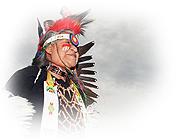
The Manitoba First Nations Diabetes Leadership Council was formed in 1999 consisting of representatives from each tribal council and non-affiliated First Nations.
Read More >

The Manitoba First Nations Diabetes Leadership Council was formed in 1999 consisting of representatives from each tribal council and non-affiliated First Nations.
Read More >

Download our ADI telehealth Calendar in .PDF format.
TeleCARE Manitoba is a new program that will help you learn more about diabetes to help you live a healthier life.
For more information you can also contact the TeleCARE Manitoba program at 204-788-8688 or toll free 1-866-204-3737, Monday to Friday 8:00 a.m. to 8:00 p.m.
Read MoreThe ADI staff provide monthly telehealth and teleconference sessions to all community workers and members on:
You might have type 2 diabetes if:
This section deals mostly with primary prevention of diabetes within First Nation communities. It also includes human resource training needs required for community-based workers.
This portion addresses the care and support of those First Nation community members and their families affected by diabetes. This section also addresses secondary and tertiary prevention.
Though many of the methods required to help address gestational diabetes are discussed throughout the diabetes strategy, this form of diabetes that affects both mother and child requires its own category.
Surveillance monitors the proportion of diabetes in the population, and helps to identify those at risk. Research is the information gathered regarding the many issues surrounding diabetes and its complications.
This section talks about the organizational infrastructure necessary to deal with diabetes at the community, tribal council and regional levels.